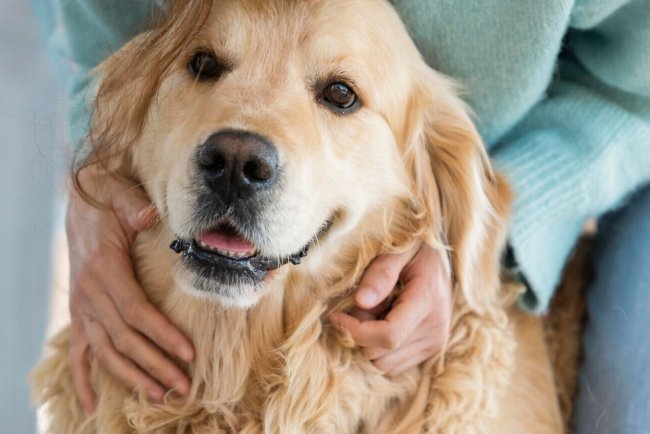Supervet on the Importance of Pet Insurance
Pet ownership is a beloved and growing trend, with millions of households around the world considering their pets as family members.

Pet ownership is a beloved and growing trend, with millions of households around the world considering their pets as family members. As a result, the demand for comprehensive care has increased, making pet insurance an essential consideration for responsible pet owners. This article explores the importance of pet insurance from a veterinary perspective, detailing its benefits, types, and how it impacts both pet owners and their furry companions.
Understanding Pet Insurance
Definition and Basic Concept
Pet insurance is a financial product designed to cover veterinary expenses for pets. Similar to human health insurance, it provides a safety net for unexpected medical costs, ensuring that pets receive the necessary care without causing financial strain on their owners. Pet insurance typically reimburses a percentage of covered expenses after a deductible is met, allowing pet owners to focus on their pets' health rather than their finances.
Types of Pet Insurance Plans
-
Accident-Only Insurance: This plan covers injuries resulting from accidents, such as fractures or injuries caused by accidents. It is generally the most affordable option but does not cover illnesses.
-
Accident and Illness Insurance: This comprehensive plan covers both accidents and illnesses, including chronic conditions and diseases. It is a more robust option that provides broader protection.
-
Comprehensive Insurance: Comprehensive plans offer the widest range of coverage, including accidents, illnesses, preventive care, and sometimes alternative treatments. This type of plan is ideal for those seeking extensive coverage and peace of mind.
Common Terms and Conditions
Understanding the terms of a pet insurance policy is crucial. Key terms include:
- Deductibles: The amount you must pay out of pocket before the insurance starts covering expenses.
- Co-Pays: The percentage of the bill that the pet owner is responsible for after the deductible.
- Coverage Limits: The maximum amount the insurance will pay for a particular condition or over the policy’s term.
The Role of Pet Insurance in Veterinary Care
Supporting Access to Quality Veterinary Care
Pet insurance plays a critical role in ensuring that pets receive high-quality care. Veterinary medicine has advanced significantly, offering various treatments and interventions that can be costly. With pet insurance, owners are more likely to pursue necessary procedures and treatments, knowing that a substantial portion of the cost will be covered.
-
Covering Unexpected Medical Expenses: Pets can suffer from unexpected health issues, such as sudden illnesses or accidents. Pet insurance helps alleviate the financial burden of these emergencies, allowing pet owners to make decisions based on their pet’s health rather than their financial situation.
-
Facilitating Early Intervention and Preventive Care: Insurance coverage encourages regular vet visits and preventive care, which can help detect issues before they become severe. Early intervention often leads to better health outcomes and can prevent costly treatments in the future.
Examples of Common Scenarios
-
Emergency Surgeries: Imagine a scenario where a pet swallows a foreign object that requires immediate surgical intervention. Without insurance, the cost of surgery can be prohibitive, potentially leading to difficult decisions. With insurance, pet owners can proceed with necessary treatment without financial stress.
-
Chronic Illness Management: Pets with chronic conditions, such as diabetes or arthritis, require ongoing treatment and medication. Pet insurance helps manage the costs of regular check-ups, medications, and specialized care, ensuring that pets receive consistent and effective treatment.
-
Specialized Treatments: Sometimes, pets need specialized care, such as advanced imaging or surgery by a specialist. Pet insurance can cover these high-cost treatments, which might otherwise be unaffordable for many pet owners.
Benefits of Pet Insurance
Financial Protection Against High Veterinary Costs
One of the most significant advantages of pet insurance is financial protection. Veterinary care can be expensive, and insurance helps mitigate these costs, making it easier for pet owners to afford necessary treatments. This financial safety net allows for better management of unexpected expenses, ensuring that pets receive the care they need without financial strain on their owners.
Peace of Mind for Pet Owners
Having pet insurance provides peace of mind, knowing that you are prepared for unexpected health issues. This reassurance allows pet owners to focus on their pet’s well-being rather than worrying about how to cover medical expenses.
Improved Health Outcomes for Pets
Insurance often leads to better health outcomes for pets. When financial concerns are minimized, pet owners are more likely to pursue recommended treatments, preventive care, and regular check-ups. This proactive approach can lead to healthier pets and a higher quality of life.
Flexibility in Choosing Veterinary Care
Pet insurance offers flexibility in selecting veterinary care. Owners are not restricted to specific clinics or treatments based on cost alone. They can choose the best care available, knowing that insurance will help cover a portion of the expenses.
Real-Life Testimonials and Case Studies
Case Study 1: Unexpected Medical Expenses
A pet owner named Sarah faced a heart-wrenching situation when her dog, Max, developed a sudden and severe illness. Max required emergency surgery and extended hospitalization, which would have cost over $5,000. Thanks to her comprehensive pet insurance plan, Sarah was able to cover a significant portion of the costs, allowing her to focus on Max’s recovery rather than financial concerns.
Case Study 2: Chronic Condition Management
John’s cat, Bella, was diagnosed with diabetes, requiring ongoing treatment and frequent vet visits. With pet insurance, John could afford Bella’s insulin injections, regular blood tests, and special diet. The insurance coverage provided financial relief and allowed John to ensure Bella received the necessary care to manage her condition effectively.
Testimonials from Veterinarians
Veterinarians often highlight the positive impact of pet insurance on patient care. Dr. Emily, a veterinarian in Houston, notes, "Pet insurance allows owners to make decisions based on their pet’s health needs rather than their budget. It leads to better health outcomes and less stress for both pets and their owners."
Choosing the Right Pet Insurance Plan
Factors to Consider When Selecting a Plan
When choosing a pet insurance plan, consider the following factors:
- Coverage Options: Ensure the plan covers the types of treatments and conditions that are relevant to your pet.
- Cost: Compare premiums, deductibles, and co-pays to find a plan that fits your budget.
- Exclusions: Review what is not covered by the policy, such as pre-existing conditions or certain treatments.
Tips for Evaluating and Comparing Providers
- Research and Compare: Use comparison tools and reviews to evaluate different insurance providers. Look for plans that offer comprehensive coverage and good customer service.
- Read the Fine Print: Carefully review policy details, including coverage limits, exclusions, and terms. Understanding these aspects will help avoid surprises later.
Common Mistakes to Avoid
- Overlooking Coverage Limits: Ensure the policy provides adequate coverage for potential health issues your pet might face.
- Ignoring Exclusions: Be aware of any exclusions that could affect your pet’s care, such as hereditary conditions or breed-specific issues.
- Not Reviewing Policy Terms: Regularly review your insurance policy to ensure it still meets your needs as your pet ages or if their health changes.
The Future of Pet Insurance
Trends and Advancements
The pet insurance industry is evolving with advancements in technology and increased awareness among pet owners. Innovations include telemedicine coverage, wellness plans, and more customizable policies to meet diverse needs.
Evolving Industry to Meet Pet Owners' Needs
As the demand for pet insurance grows, providers are continuously improving their offerings to include more comprehensive coverage options, better customer service, and flexible plans that cater to a wider range of pets and conditions.
Predictions for the Future
The future of pet insurance is promising, with expected growth in coverage options and affordability. Advances in veterinary medicine and increased recognition of the benefits of insurance are likely to drive further innovation and accessibility in the industry.
Final Thoughts
Pet insurance is a vital aspect of responsible pet ownership, offering financial protection, peace of mind, and access to quality veterinary care. From covering unexpected medical expenses to facilitating preventive care, insurance ensures that pets receive the best possible treatment without financial stress on their owners. As the industry continues to evolve, pet insurance will play an increasingly important role in maintaining the health and well-being of pets everywhere.
What's Your Reaction?




















